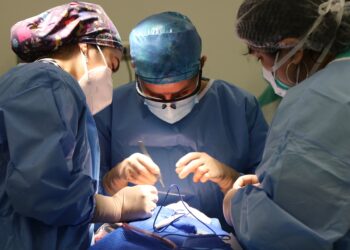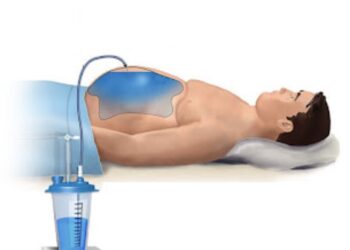Bone Marrow, after the blood itself, is the largest and most widely distributed organ in the body, where blood is […]

|
Bone Marrow, after the blood itself, is the largest and most widely distributed organ in the body, where blood is produced. Our bone marrow contains about 1 trillion cells and releases approximately 200 billion red cells, 100 billion white cells and 400 billion platelets each day.
Bone marrow aspiration and biopsy are now well-accepted procedures for the evaluation both the cellularity of the marrow and the nature of the cells present. Although the sternum (breast bone) is the traditional site for bone marrow aspiration (but not for biopsy), our preferred site is the posterior Iliac crest (the hip bone) because of ease and safety and the fact that the posterior Iliac crest is usually quite cellular.
INDICATIONS:
- Unexplained anaemia. Decreased presence of red blood cells, the cause of which may be a variety of reasons, the most common being deficiency of iron stores and Myelodysplasia.
- Thrombocytopenia. Decreased production of platelets, I.T.P. (or Idiopathic Thrombocytopenia) being most common. Physicians determine if adequate number of platelet producing cells (Megakaryocytes) are present in the bone marrow.
- Pancytopenia. Decreased production of all three cell lines, differentiates relative involvement of red cell, white cell and platelet lines in a disease.
- Leukemia, Lymphoma, or Myeloma (helpful in diagnoses, staging and determining results of the treatment)
- Lympho and Myeloproliferative disorders.
- Metastatic disease. To determine if the bone marrow is involved with cancers from other sites.
- Chromosomal analyses
- Unusual infection. Such as Tuberculoses, Fungi and Fevers of Unknown Origin
CONTRAINDICATIONS:
- Haemophilia and other Clotting disorders. (If you are taking a blood thinner your doctor needs to be informed before the procedure).
- Previous Radiation Therapy site.
PRE- and POST-PROCEDURE PATIENT EDUCATION:
The procedure is performed under local anaesthesia, therefore patient can eat or drink any time before or after the procedure. The patient will need to remain in a supine position (lay on the back) for about an hour after the procedure to help keep pressure on the biopsy site. The urinary bladder should be emptied before the procedure. The bandage over the biopsy site may be removed 24 hours after the procedure. Ask the patient to notify the physician of any pain, drainage, fever or spreading redness around the biopsy site area. A standard consent form should be signed by all patients before the procedure.
|
|
FAQS
| A. |
Normal white blood cell (WBC are between 4.5-10x10 [3] UL.)
Normal hemoglobin (HBG is between 12-16 gm/dl.)
Normal platelets (usually between 120 to 500x10[3] UL) |
|
| Determining if any of the above are high or low is one of the most common reasons to perform a bone marrow biopsy.
Additionally, primary cancers of the bone marrow such as leukaemia, myeloma and lymphoma or checking for cancers involving other sites such as metastatic disease may be another common reason to perform this test. |
A. Yes, but only momentarily. It depends upon the technique being used by the physician to perform the test. (see the video) The trick is to numb up the area well and perform the aspirate and the biopsy in the shortest amount of time possible. If your pain threshold is low, you may need to ask your physician to give you some pain medication pre-procedure.
A. Very rarely are there any complications. Hemorrhage and infection can be prevented by applying pressure and performing the procedure in a sterile fashion.
| A. The most important thing for you to do is to lay very still. Ask your physician to let you know when he is going to aspirate the marrow (watch the video). At that moment you may experience slight discomfort or momentary pain that may only last a couple of seconds. The best thing to do is to hold your breath for those few seconds or to count backwards from 20 to 1 while the biopsy is being obtained. |
|
|





